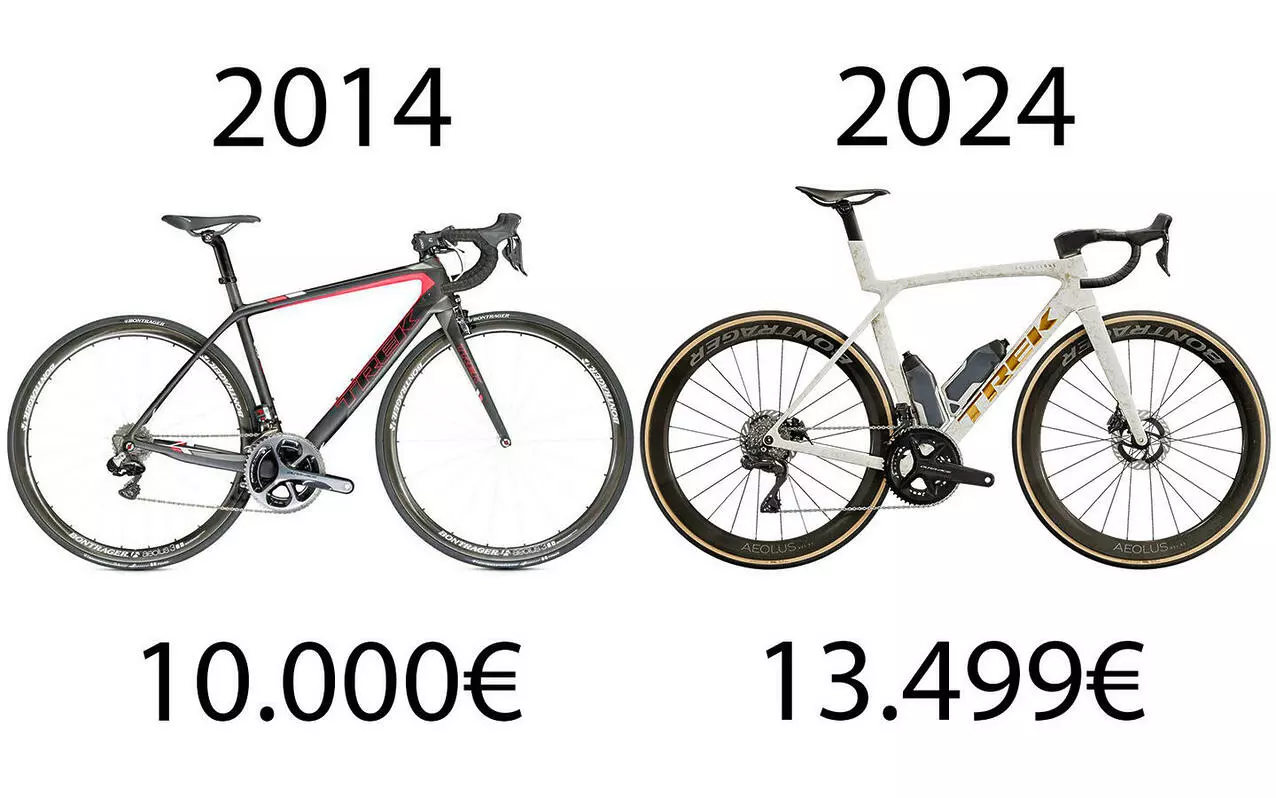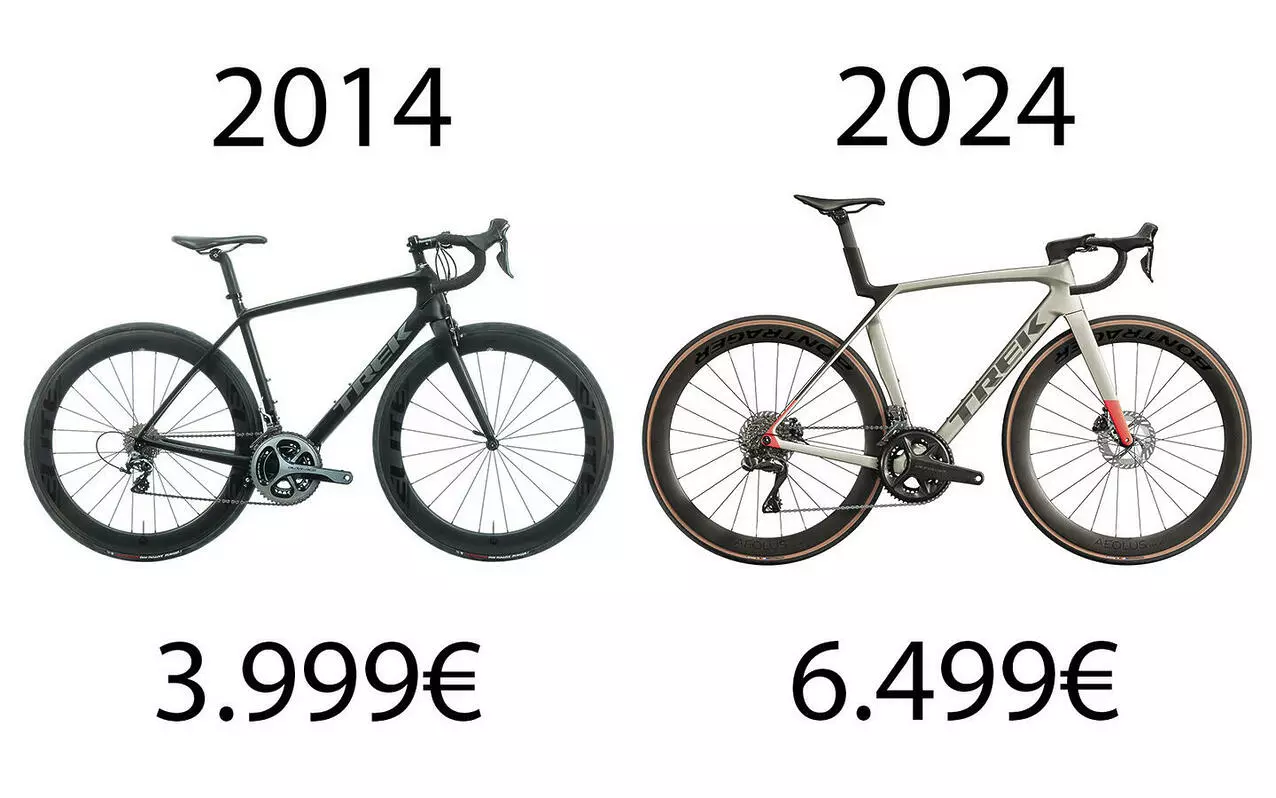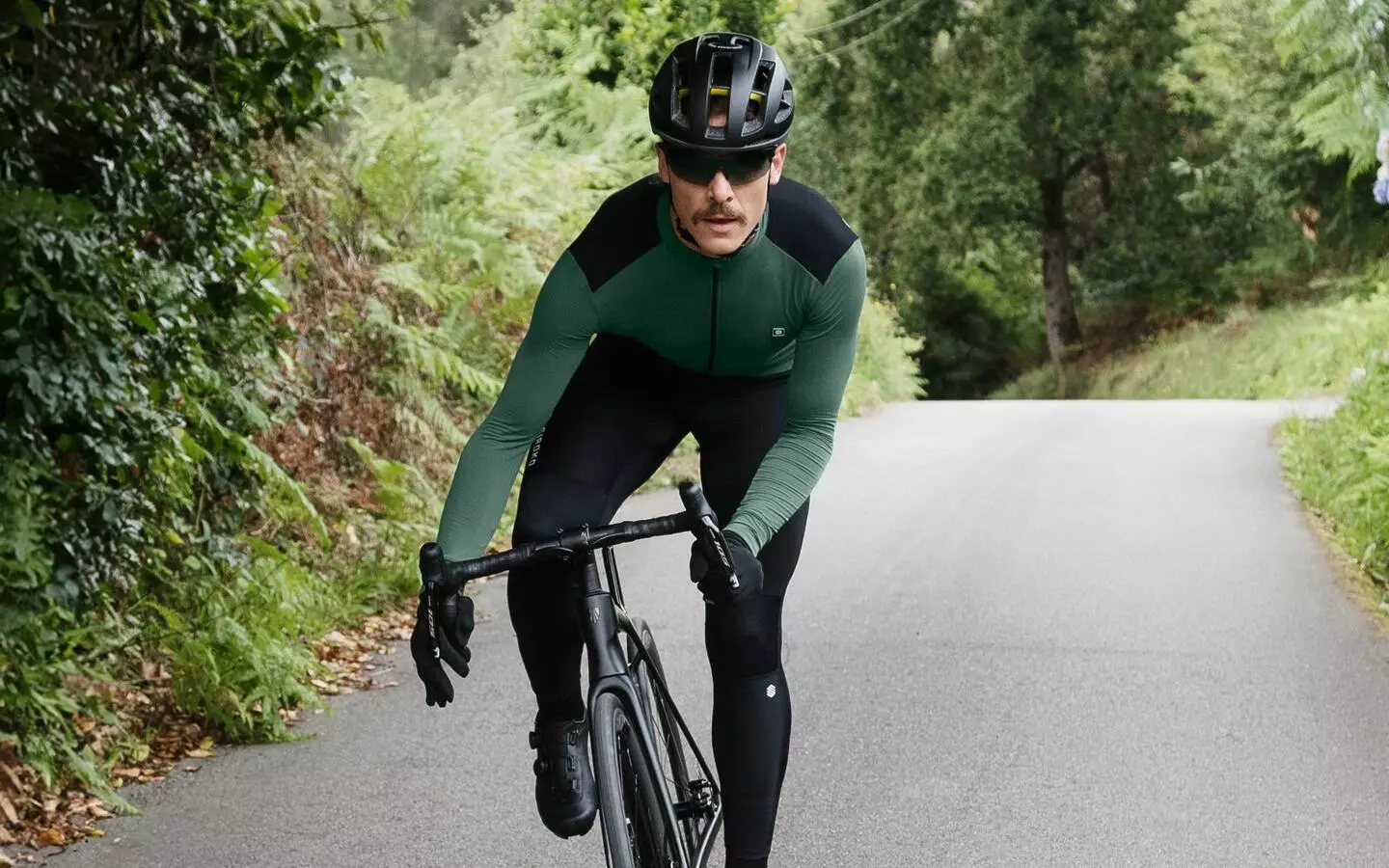The 2014 Specialized Tarmac SL4 S-Works used to have a retail price of around €10,000, while the 2024 Specialized Tarmac SL8 S-Works costs €14,000. The same goes for the Trek Madone, whose price has gone up from €10,000 in 2014 to €13,499 in 2024. While inflation may account for some of this increase, other factors such as materials, manufacturing processes, wages, R&D, logistics and marketing also play an important role in bicycle prices going up.

Inflation
The increase in bike prices cannot be explained by inflation alone. Ten years ago, you could get a premium bike for around €10,000, and if we adjust this number for inflation, their price today should be about €12,717. However, the price of modern high-end bike models can go up to €14,000. Manufacturers justify this gap by arguing that modern bicycles are more advanced and expensive to produce, due to improvements in aerodynamics, hydraulic disc brakes and electronic shifting.
Is this also a problem with mid-range bikes?
You would have paid €3,999 for a 2014 Trek Madone 5.9 before inflation happened, but its price now goes up to about €5,100. In comparison, you could get a 2024 Trek Madone SL 7 Gen 8 for €6,499, for greater value and better specs than the 2014 model. Actually, the Trek Madone SL 6 Gen 8, featuring Shimano 105 Di2, costs €4,999 and doesn’t fall short to its premium counterpart.

In the case of Specialized, the 2014 Tarmac SL4 Comp with Ultegra Di2 was €3,899, which, adjusted for inflation, would cost €5,000 in 2024. Still, you could get the closest model in specs, featuring Shimano 105 Di2, for €4,400. The range Expert is an alternative to the SL8 Comp bike, which, featuring Shimano Ultegra Di2, you could get for €7,000.
In short, mid-range bikes offer better value for money when it comes to inflation prices, which leads to a more specific question: Why are high-end bikes so expensive?
How much does it cost to manufacture bike frames?
The cost of manufacturing a frame depends on whether the brand owns the factory or works with external manufacturers. When it comes to high-end carbon frames, the cost of the materials used to manufacture them can go up to €350, as they are made from higher quality carbon fibers. This would be the case with S-Works bike frames from Specialized, made with FACT 12r Carbon, which are lighter and stiffer than mid-range models.
Another key factor is the cost of the molds, which can vary between €10,000 and €20,000 per mold, depending on the design. Each frame size needs its own mold, which means the total cost can range from €50,000 to €120,000. Brands can monetize these costs if the model is popular, but in the case of less popular bikes, such as time trial bikes, it may take longer to make up for these costs.
Research and development
R&D investment is significant for brands such as Trek and Specialized. Factor, a smaller brand, spends about $1 million a year, which adds $100 to the cost of each bike. These R&D costs are distributed among different models and have been reduced with the use of computer modeling and artificial intelligence (AI), although software also has a cost.
Components
Many brands manufacture their own components, which entails additional costs. However, this allows them to obtain a higher profit margin and better control of the quality of each product. If brands do not manufacture their own components, they purchase them, which also adds additional cost. The most expensive components are wheels and drivetrains, although brands obtain these at a lower price than retail.
There is so much variety that it is practically impossible to come up with a number on the cost of the components applied to the total price of a bicycle.
Delivery and distribution
Transportation also affects the final cost of a bike. Ship transport is the most economical option, adding between €40 and €60 per bicycle, while air transport can increase costs to €200 or more. In addition, there are import and insurance costs that can add up to €1,200 per container.
Brands that operate under a B2C (direct-to-consumer) structure, such as Canyon, can offer lower prices compared to B2B (business-to-business) brands such as Trek and Specialized. The use of distributors and stores can increase the price by 30% to 60%. However, actual margins vary, especially when stores apply discounts to reduce stock.
Marketing and sponsorships
Marketing and sponsorships are crucial for brands, especially when it comes to professional teams. Trek, for example, sponsors the Lidl-Trek team, providing at least 150 bikes worth €2,1 million. The same goes for the women’s team, which requires at least 100 additional bikes. When it comes to Specialized, the brand sponsors several teams for both men and women. These sponsorships can cost between €3 and €8 million per year, which translates into an additional cost for the consumer.
It’s quite hard to assess how high this additional cost would be for the consumer, as it depends on whether it is applied only on the bike model used by the teams, or on all the bike models from the same range, as well as the total volume of manufactured bikes. The owner of Factor, which produces 10k bikes a year, said the numbers would be between €300 and €500 approximately.
Not as big of a profit margin as one might think
When adding up the costs of manufacturing, distribution, R&D and other factors, a bicycle frame can cost between €1,000 and €2,000. Although this is far from the retail price, distributor and store profit margins must be added, which can be 30% each. In addition, brands must cover other indirect costs such as salaries, rents, software, insurance and taxes.
Contrary to common knowledge, many brands are not making that much profit. In the wake of the pandemic boom, many brands have seen their sales drop, and some stores have had to close down.
If prices went a little lower, would people buy more bikes?
During the pandemic, prices were not that low and the number of bicycles sold was higher than ever before. However, this increase in sales was an exception. Currently, electric bicycles are the best-selling bicycles in all price ranges. Although high-end bicycles are very expensive, it is possible to find some from €5,000, or even €2,000, that offer the same fun and performance quite similar to premium bikes. The improved performance of the latter is something that few cyclists can ever notice. If you think about it, they are bikes developed by the brands in collaboration with pro cyclists, and only in some sports will you have the same equipment as the highest paid pros in the world.




